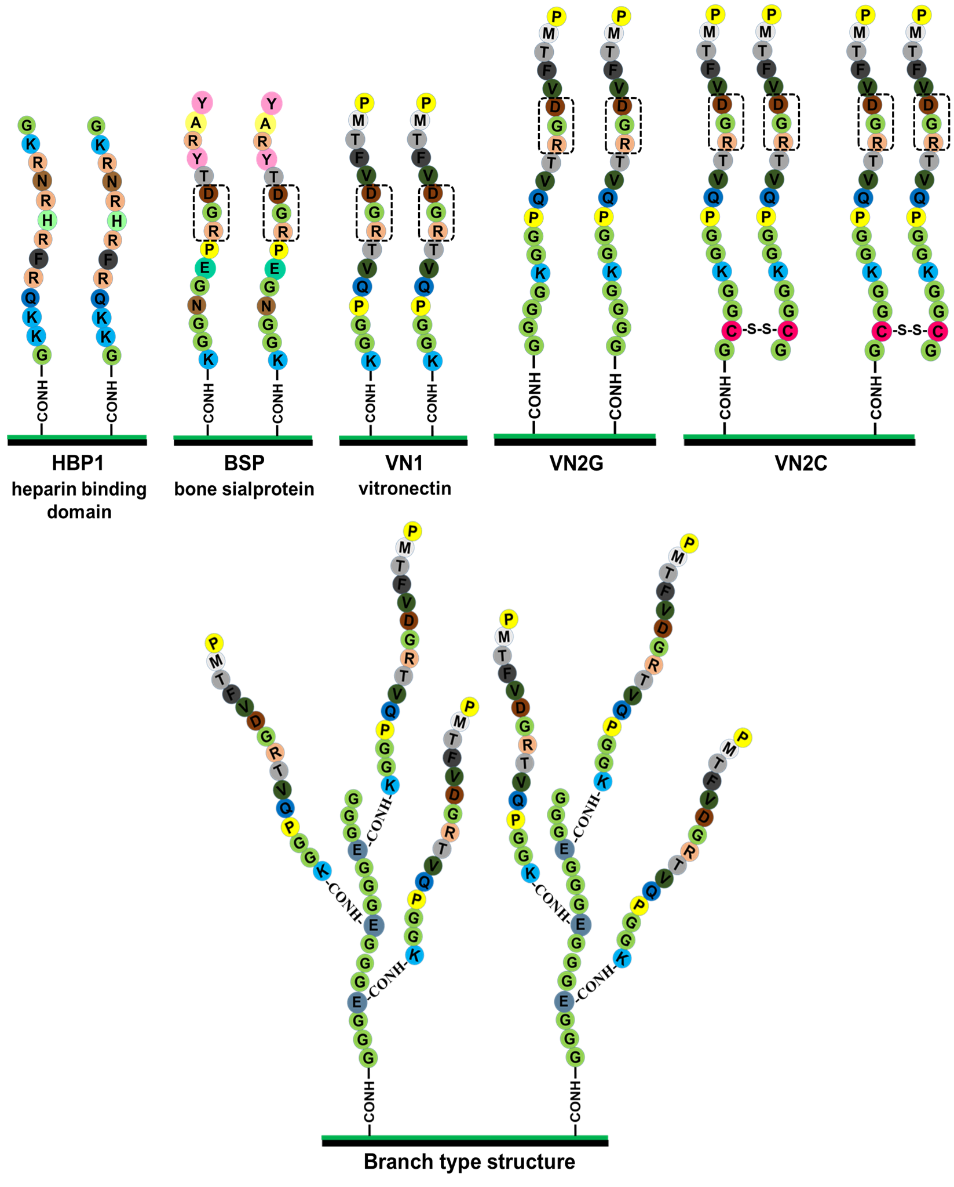Human pluripotent stem cells (hPSCs) have significant potential in therapeutic applications for many diseases. The feeder-free cultures using synthetic biomaterials as stem cell culture materials offer more reproducible culture conditions and lower the cost of production without introducing xenogenic contaminants. Therefore, we investigated hESC (H9) culture on biomaterials grafted with different sequence of nanosegments.

We prepared dishes coated with polyvinylalcohol-co-itaconic acid (PVA-IA) hydrogels having optimal elasticity of 25.3 kPa storage modulus, and grafted with ECM-derived cell-adhesion peptides. hESCs (H9) were cultured in a chemically defined medium on PVA-IA hydrogels grafted with oligopeptide derived from vitronectin (KGGPQVTRGDVFTMP), bone sialprotein (KGGNGEPRGDTYRAY), heparin binding domain (GKKQRFRHRNRKG), and also two other sequences that are modified from basic oligovitronectin, of which we call VN2C (GCGGKGGPQVTRGDVFTMP) and VN2G (GGGGKGGPQVTRGDVFTMP). VN2C contains cysteine (C) amino acid containing sulfur element, which allows that two VN2C peptides form a dimer structure by S-S bonding spontaneously in atmosphere, so that this sequence of oligopeptide (VN2C) is expected to have a higher surface density of cell adhesion domain of oligopeptides compared to other oligopeptide. Besides, we also design a branch type oligopeptide structure by using dual activation and grafting methods. Following the reaction of oligopeptide on PVA-IA hydrogels after the first time grafting, another oligopeptide was subsequently grafted to create a star-like structure.
hPSC were expanded on each nanobrush (oligopeptide)-grafted hydrogels having different nanobrush design and discussed the optimal design of biomaterials having nanobrush from the expansion fold and pluripotency of hPSCs.


The results show that cells culture on the surface having VN2C sequence, which has dual nanosegment structure, has a higher proliferation ability and also maintains the pluripotency of hPSCs. We found the importance of dual nanosegments of the cell binding domain on the maintenance of plurupotency of hPSCs.
Akon Higuchi; Yi Tung Lu; Shih Hsuan Kao; Saradaprasan Muduli; Hong Ren Lin; Hsing Fen Li
References:
[1] A. Higuchi*, Q.-D. Ling, Y. Chang, S.-T. Hsu, A. Umezawa, Physical cues of biomaterials guide stem cell differentiation fate, Chemical Reviews, 113 (2013) 3297-3328. 41.298
[2] A. Higuchi*, Q.-D. Ling, S. S. Kumar, Y. Chang, T.-C. Kao, M. A. Munusamy, A. A. Alarfaj, S.-T. Hsu, A. Umezawa, External stimulus-responsive biomaterials designed for the culture and differentiation of ES, iPS, and adult stem cells, Prog Polym. Sci., 39 (2014) in press
[3] A. Higuchi*, Q.-D. Ling, S.-T. Hsu, A. Umezawa, Biomimetic Cell Culture Proteins as Extracellular Matrices for Stem Cell Differentiation, Chemical Reviews, 112 (2012) 4507-4540. 41.298